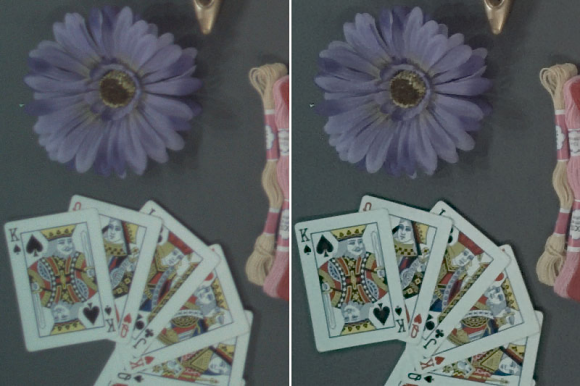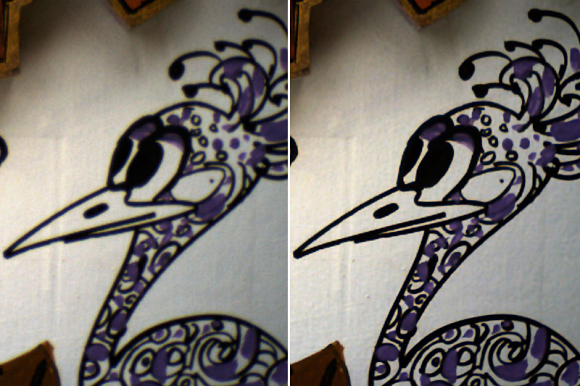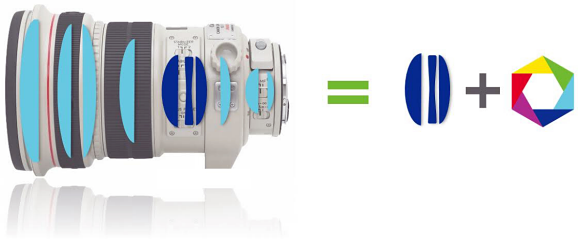
Eyes All Around Us
Embedded cameras are everywhere. As they find a home in our mobile devices, our appliances and our vehicles, not to mention in medical and industrial applications, the demand for imaging technology will continue to increase exponentially.
Modern imaging optics are complex. Additional physical lenses are required in order to correct geometric and chromatic aberrations, however embedded cameras require small, low-cost optics making this approach impractical. Since the physical properties of light stay constant, the secret to pushing the limits of ever-shrinking imaging hardware resides in complex algorithms that are dependent on computational power to unlock their true potential.
One Imaging Solution
One example solution, Algolux's Virtual Lens software models optical aberrations and corrects them, while potentially reducing the need for the same number of physical lenses. This approach also reduces the cost of optics, lowers manufacturing risk ,and provides users with a sharper, more detailed and pleasing image. In essence, the megapixel race is over.

Fig 1: Mobile camera, 4-megapixel sensor: Standard Image Capture (L) / With Virtual Lens (R)
As consumers have made the smartphone their camera of choice, they have realized that more megapixels often don't mean an increase in quality. Sensor, pixel and lens sizes are similar across flagship devices, with a handful of companies supplying the top handset makers. Specs have taken a back seat to perceived image quality, an improved experience, and an imaging pipeline that boosts performance levels. Nonetheless, small sensors and pixels remain a physical barrier when capturing small details, one that can be overcome with Virtual Lens.

Fig 2: Mobile camera, 2-megapixel sensor : Standard Image Capture (L) / With Virtual Lens (R)
Improving Image Quality Computational Imaging Can Be Life Changing
As computer vision gains a foothold in many industries, notably in the automotive world, the precision of images captured through small, plastic lenses becomes crucial. Processing a more detailed image means added effectiveness for computer vision applications and security for the end-user.

Fig 3: Mobile camera, 8-megapixel sensor: Standard Image Capture (L) / With Virtual Lens (R)
Fields such as medical imaging stretch technology to their limit. When using tiny endoscopic cameras during examinations, the extra clarity can prove life-altering for the patient. Similarly, increasing sharpness and detail in security footage brings elements to light that might otherwise stay hidden, resulting in added value and reliability for surveillance cameras.
Increasing Manufacturing Yields Reduces Risk And Scrap Costs
Small lenses present a significant manufacturing challenge, as they must attain a minimum quality to be integrated into devices. A majority is thus deemed unusable and is discarded, at great environmental and financial costs. By correcting optical aberrations through Virtual Lens software, more lenses are deemed acceptable, thereby alleviating manufacturing risk and reducing scrap costs.
This computational correction also allows optical engineers to create innovative lens designs, or reduce the complexity of lenses. This can signify a reduction in the number of optical elements used in a module, enabling thinner and more compact designs without compromising image quality.
With computational imaging and correction we are ready for the next great leap in cameras, moving past physical limitations and opening the door to increased picture clarity for the embedded devices we will increasingly find all around us.

Fig. 4: The major disruption to the conventional camera will come from computational cameras: new optical and software designs that are not easily integrated into the existing ecosystem.
About the Author
Allan Benchetrit is President & CEO of Algolux. Allan has over 25 years of experience in the ICT industry, including 15 years in mobile media with startups and blue chips. Most recently he served as President and CEO of Vantrix between 2008-2012, a global mobile video infrastructure company he co-founded in 2004. Allan holds an MBA from John Molson School of Business.
Related Stories
Fluke TiX series takes Infrared Cameras to a whole new level with the largest LCD touchscreen
OmniVision Announces OV16880, Industry's First 16-Megapixel Sensor Built on 1-Micron Pixels
SMIC Achieves 8M Pixel CIS Production on 0.13-Micron BSI with Cista